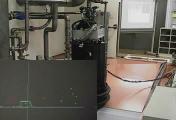 MPEG
MPEG
Returning to Oxford, from May 2000 to September 2001 I spent some time working on Markerless Human Motion Capture, in cooperation with Ian Reid in Oxford. In parallel, I continued to work on SLAM and continued working towards increasingly general vision-based systems (RAS 2001).
From 2002 to 2007 I held an EPSRC Advanced Research Fellowship, moved to Imperial to take up a lectureship and found the Robot Vision Group in May 2005, and have since worked full-time on visual SLAM and its many applications.
I made a major breakthrough in 2003 with MonoSLAM, a real-time localisation and mapping system based on a single computer-connected camera which enabled robust and drift-free localisation in full 3D. The lack of need for additional sensors, infrastructure or special computing resources made for a very flexible system with a wide range of possible applications. The MonoSLAM system is widely acknowledged to be one of the key prototypes for recent commercial projects and products in low-cost mobile robotics (e.g. Dyson) or mobile phone/tablet/wearable 3D localisation and sensing (e.g. Google Project Tango).
Among many other published advances since this time, I have collaborated with long-term colleagues and PhD students at Imperial College, Oxford, Zaragoza and others on important algorithms, studies and systems such as Inverse Depth Features (2006), Active Matching (2008), "Why Filter?" (2010), DTAM and KinectFusion (2011), SLAM++ (2013) and Event Camera SLAM (2014). Please see the publications and videos on the Robot Vision Research Group site for much more information.
Alongside this academic research, I have a longstanding relationship with Dyson Ltd. in the UK, having worked for them as a consultant on robot vision technology since 2005. This collaboration led to the creation in 2014 of the Dyson Robotics Laboratory at Imperial College of which I am the Director and founder.
Andrew Davison